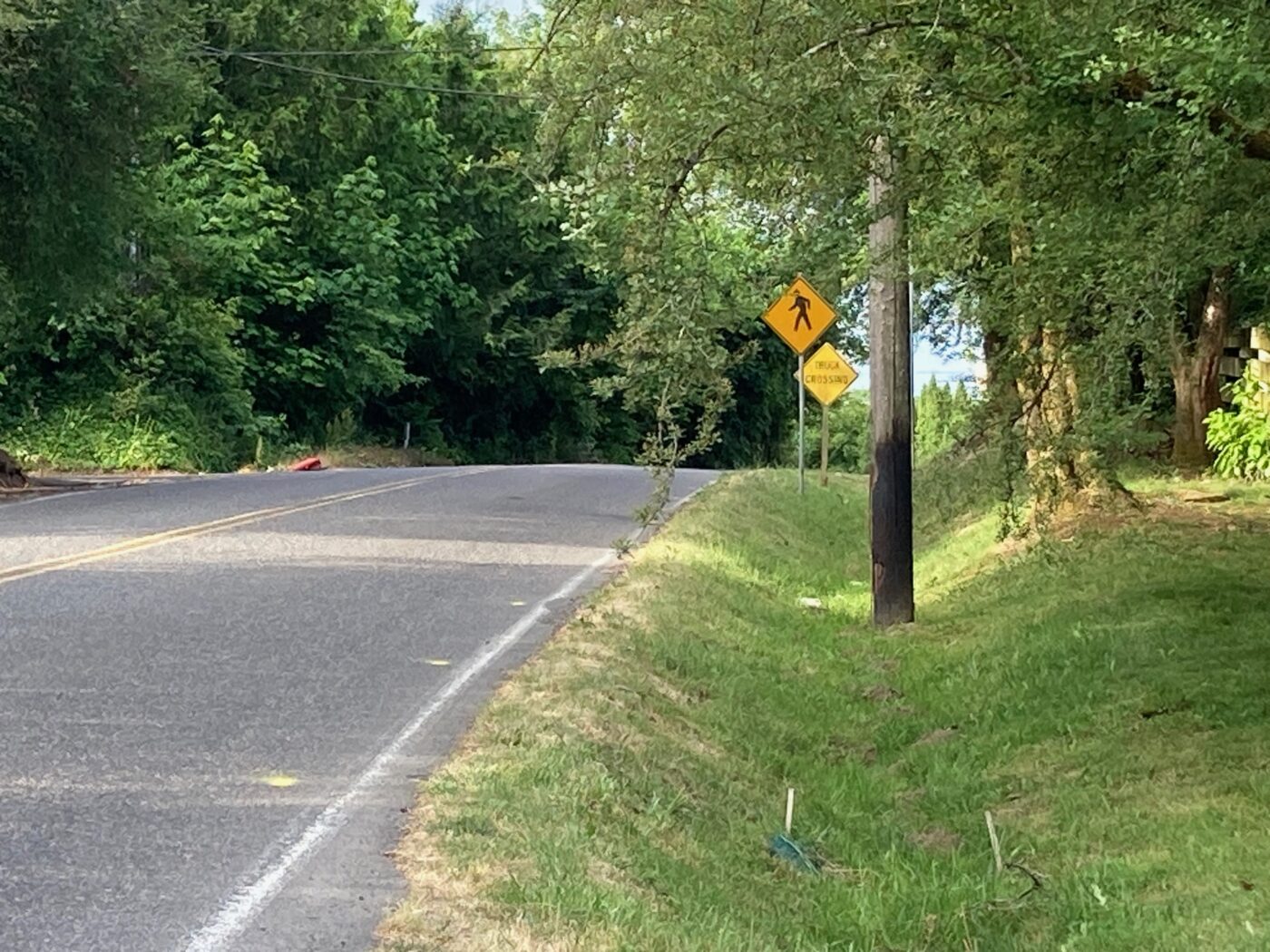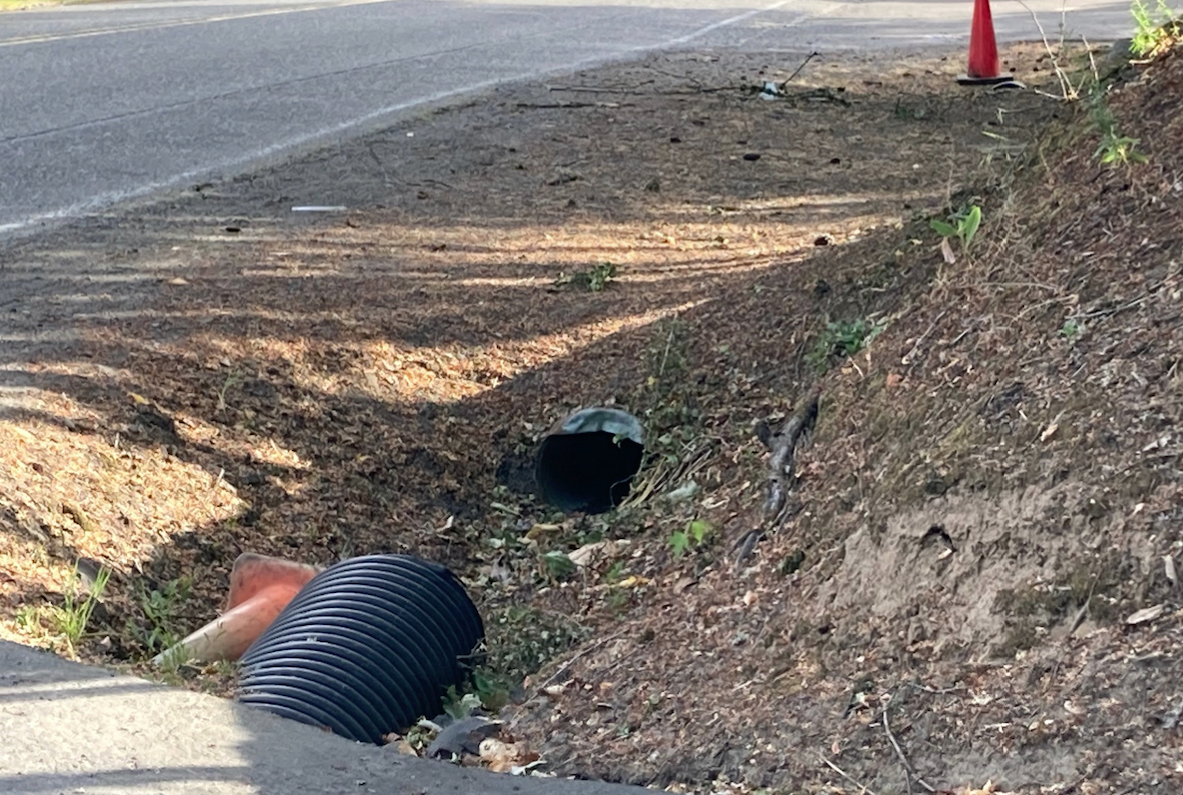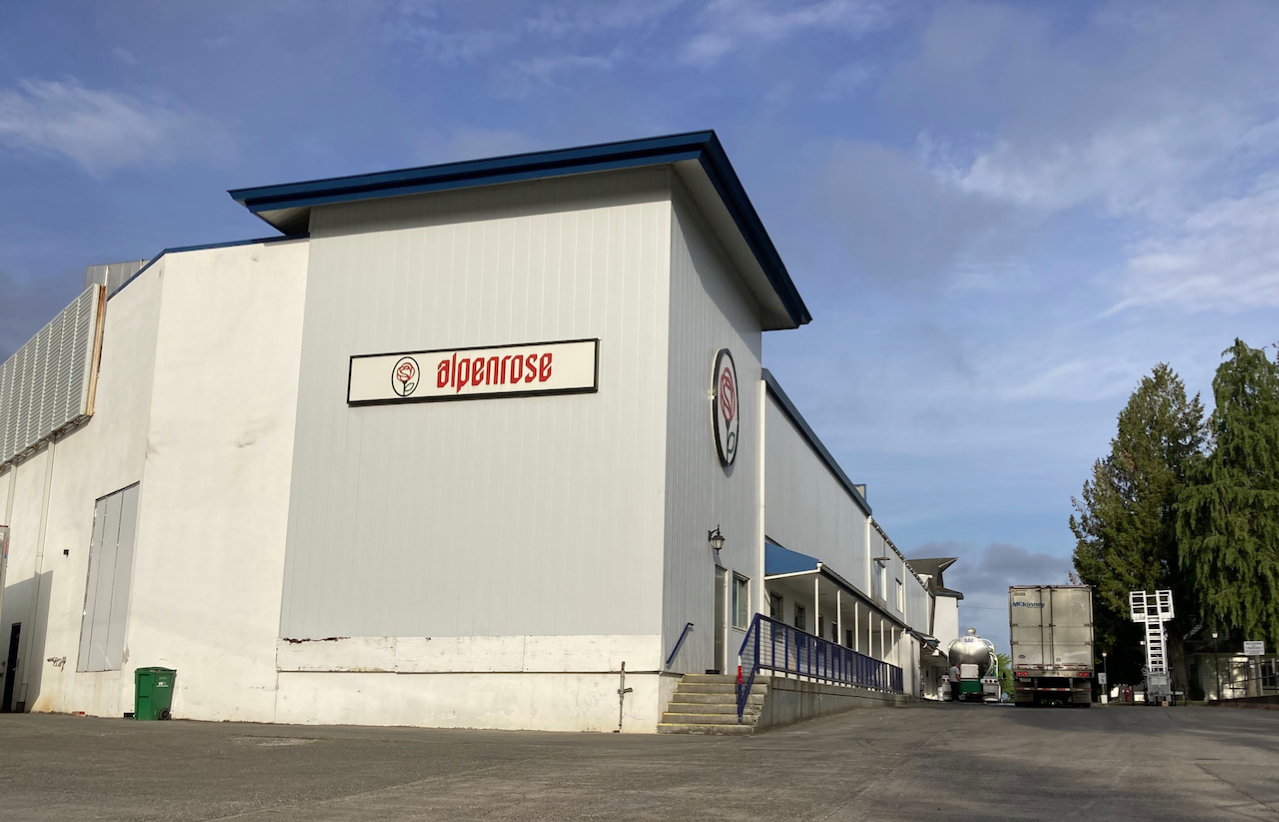***UPDATE (6/9/2023, 1:05PM): a BikePortland reader just alerted us to a letter in the Early Assistance meeting packet (page 3 in the 4/25/23 EA pdf here) which indicates that the zoning change requested by the developer would allow for approximately 307 new units to be built. The report from the April Early Assistance meeting showing bureau responses is not yet available, but BikePortland will be following this story as it unfolds.***
What’s up with Alpenrose?
I can’t say how many times I have casually asked people that question over the past year, without ever really doing the work of finding out.
But now I know that the answer is — “a lot.”
So let’s take a tour of what’s going on with this major development in southwest…
The past five years
The Alpenrose campus was home not only to an operating dairy, but also a velodrome, Little League playing fields, and Dairyville—a faux frontier town that would come alive during Christmas. Cyclists had been racing at the Alpenrose Velodrome, and on the grounds adjacent to it, for nearly 60 years before it closed permanently in 2021.
Suffice it to say, Alpenrose has been an iconic location for a number of different communities for many years.
But things changed in 2019 when the Cadonau family, descendants of the farm’s 1891 founder, sold the dairy business to competitors Smith Brothers Farms, with Smith Brothers Farms leasing the dairy facilities and the Cadonau family retaining ownership of the 51-acre property.
The sale was contentious, though. One faction of the Cadonau family sued the other to block it. The sale moved forward anyway, and the judge ordered the family into arbitration to settle their ownership disagreement. What eventually resulted was that a new entity, Alfa Shattuck LLC (controlled by the pro-sale faction of the family), took ownership of the property.
Shortly after the dairy sale to Smith Brothers Farms, the Little League announced that it would be looking for a new venue for its World Series events. And in 2021, Alpenrose permanently closed bike racing events and other uses of the property.
… and here’s the latest
In April of this year, Alfa Shattuck took an initial step forward with its plans to subdivide the property into 193 (UPDATE, 12:57 AM: and possibly as many as 307) single and duplex housing units with an Early Assistance meeting—a pre-application exchange of information in which the developer reveals general plans and the city bureaus indicate what the city will be looking for in a building permit application.
What’s at stake
I spoke yesterday with Marita Ingalsbe, President of the Hayhurst Neighborhood Association (NA), where Alpenrose is located. Ingalsbe has done a truly impressive job of keeping abreast of this very complicated land use process.
She told me that “transportation is the community’s biggest concern.”


Alpenrose sits on SW Shattuck Road, a typical southwest Portland two-lane collector which lacks both a safe walking space and bike lanes. It appears that stormwater run-off from the street flows into open ditches on the side of the road. This means that required frontage improvements, like building a sidewalk or widening the road for a bike lane, might not be possible without putting in an expensive on-site stormwater facility.
“It would be wonderful if we could safely walk and bike on Shattuck,” remarked Ingalsbe. But recent policy statements from the Bureau of Environmental Services suggest the odds are against that happening:
… incremental stormwater improvements may not be possible in SW Portland because of the existing lack of infrastructure and downstream capacity limitations.
Locals are also concerned about the Hemstreet Heights neighborhood to the west of Alpenrose, in Beaverton. The small roads in that neighborhood will lead from the property to SW Oleson Rd and its notorious “six corners” intersection at Beaverton-Hillsdale Highway. Also known as “crash corner,” neighbors worry it cannot safely handle the car traffic from nearly 200 new residences.
Some good news
But neighbors would like to see more than just transportation improvements. They have worked tirelessly for two years to “advocate for a balanced proposal that will make the development the best it can be for the community.” This includes advocating for some higher density, affordable housing on-site, and honoring the legacy of the Alpenrose campus by building sports facilities on the acreage.
Three area neighbors, including Ingalsbe, joined together to form Friends of Alpenrose. They have met with the Bureau of Planning and Sustainability, Portland Parks, Washington County, representatives from Commissioners Rubio’s and Ryan’s office, Metro representative Duncan Hwang, Beaverton’s Neighborhood Association Committee—
I’m going to stop, but I’m only about a third of the way through their list of meetings.
Let’s just say they’ve been working hard, and that there is some good news. 10%, or about five acres, of the site is required to be park or open space and Portland Parks parks is interested in acquiring some of that land for multi-purpose ball fields.
And Ingalsbe also assured me that the Red Electric Trail route, which runs through a northern section of the property, would be an improved right-of-way in the development.
Holding the city accountable in a shifting political landscape
But the transportation improvements the neighborhoods would like to see are are coming forward at a time when both the city and state have made recent moves to loosen building code requirements in response to the housing shortage. The controversial HB 3414, currently hung up in the Oregon legislature, limits the ability of cities to deny developer-requested variances (exceptions) to code requirements. Typical variances involve getting out of making frontage improvements like sidewalks and bike lanes.
And recently in the City of Portland, Commissioner Carmen Rubio surveyed stakeholders of the permitting process with the question, “What are the top five requirements the City of Portland should consider suspending or modifying to support increased housing productions?”
So the Hayhurst Neighborhood Association and the Friends of Alpenrose face headwinds as they advocate for safe places to walk and bike. But they are a savvy bunch. At their last meeting, the HNA hosted Joan Frederiksen and Mary Hoffmann from Portland’s Bureau of Planning and Sustainability to outline the permitting process that the Alpenrose development will need to follow. It’s a complicated development path which requires a “Land Division with Environmental Review to create four tracts/lots, and 2) a Comprehensive Plan Map Amendment and Zoning Map Amendment review to change the zoning on the site from R10 to R7.” The advocates are preparing themselves for this process.
As Portland transitions to a new form of government, it is important to keep in mind the historic role neighborhood associations have played—in fact were designed to play—in holding city government accountable. You can see that in the NA notification requirements that are part of permitting building.
Ingalsbe and I broached the subject of whether the accountability workload carried by NA volunteers has become excessive, especially when it comes to land use. She agreed that it might be nice to have paid employees in city council district offices carry some of the load.
And hopefully that will happen, but it will really depend on whom Portlanders vote into office. Southwest Portlanders would benefit from having an elected representative who understands how tightly joined land use and transportation are, and how both depend on adequate stormwater facilities.
Historically underserved community
As best I can tell, government officials use the phrase “historically underserved communities” as a euphemism for racial and ethnic minorities. But when I hear “historically underserved community,” my mind turns to southwest Portland.
The City of Portland began annexing the region from Multnomah County about half a century ago. The County did not require the infrastructure, like drain pipes under the roads, that is needed to build sidewalks, so southwest joined the City without sidewalks or the means to easily add them.
In the intervening decades, the City of Portland has not done enough to rectify this situation. Consequently, this part of town is now ill-prepared to absorb the new housing coming its way.





